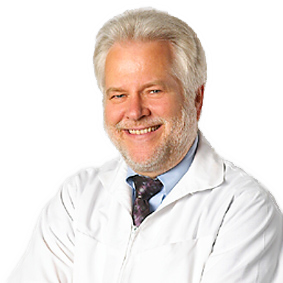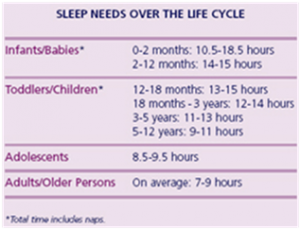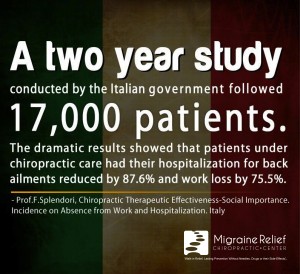Courtesy of:
John H. Keefe III, D.C.
(918) 663-1111
IN THE NEWS: Researchers Find Grave Downside to Sleeping More Than 8 Hours a Day It’s no secret that chronic sleep deprivation is taking its toll on America’s health, but a new study suggests that those who get more than ample sleep aren’t that safe either. Seemingly counterintuitive results reported in the Journal of the American Heart Association on Wednesday suggest that oversleeping might put you at higher risk for certain heart conditions. The study, conducted at Keele University, was a systematic review and meta-analysis of 74 existing studies — collectively covering three million patients — that investigated how sleep hours impacted overall health. Lead author and clinical lecturer in cardiology Chun Shing Kwok, Ph.D. and his team noted a link between consistently sleeping more than eight hours and the risk of all-cause mortality (dying of anything) and the risk of cardiovascular conditions. Those who consistently slept for ten hours had a 30 percent increase in their risk of all-cause mortality and a 49 percent increase in the risk of cardiovascular-related death, the team writes. “Sleep is complex and related to many factors such as lifestyle, occupation, caring needs for children and relatives as well as physical illness,” he adds. “Too much sleep may be related to conditions like obstructive sleep apnea and hypothyroidism.” Instead, sleeping longer than ten hours might be indicative of other problems that might give cardiologists concern, adds Brooke Aggarwal, Ph.D., a behavioral scientist and clinical health education specialist in the Division of Cardiology at Columbia University Medical Center who was not involved in the study. “Scientists are not totally sure if sleeping too much is a risk to health itself, or if it is simply a marker of increased risk, she tells Inverse.
WELLNESS: Surprising truth about exercise and better brain health When it comes to the physical and mental benefits of exercise, research has focused on the effects of consistent, long-term exercise routines. But an intriguing review shows that a single episode of exercising can offer substantial and immediate brain health dividends that promote mental clarity and improve cognition. (how cool is that?!) This review also highlighted results from steady exercise (over time) – with promising implications for preventing cognitive decline and protecting against Alzheimer’s disease or other forms of dementia. A wide range of mental functions are benefited, including attention, working memory, problem solving, cognitive flexibility, verbal fluency, decision making and inhibitory control. Mental processing speed also increases. And, positive effects from a single exercise session can last for up to two hours post-workout. Also (no surprise here), researchers reported that acute exercise had the effect of enhancing mood and decreasing stress. Acute exercise triggers neurochemical changes that affect large areas of the brain, impacting emotional states and relieving symptoms associated with mood and psychological disorders – such as depression, anxiety, post-traumatic stress disorder, schizophrenia and more. In one study, 30 minutes of walking and running at 60 to 70 percent of VO2 max improved mood and cognition – results that were duplicated time and again by other studies. It’s no wonder that scientists say: ‘regular exercise is as effective as antidepressant medication in treating depression.’ No matter which type of exercise you choose, there’s one undeniable fact, physical activity is a potent therapeutic tool to address depression, alleviate anxiety and avoid significant cognitive decline.
CHIROPRACTIC: Research results: For Acute and Chronic Pain In a Randomized controlled trial, 183 patients with neck pain were randomly allocated to manual therapy (spinal mobilization), physiotherapy (mainly exercise) or general practitioner care (counseling, education and drugs) in a 52-week study. The clinical outcomes measures showed that manual therapy (chiropractic care) resulted in faster recovery than physiotherapy and general practitioner care. Moreover, the total costs of the manual therapy-treated patients were about one-third of the costs of physiotherapy or general practitioner care. Korthals-de Bos et al (2003), British Medical Journal “Patients with chronic low-back pain treated by chiropractors showed greater improvement and satisfaction at one month than patients treated by family physicians. Satisfaction scores were higher for chiropractic patients. A higher proportion of chiropractic patients (56 percent vs. 13 percent) reported that their low-back pain was better or much better, whereas nearly one-third of medical patients reported their low-back pain was worse or much worse.” Nyiendo et al (2000), Journal of Manipulative and Physiological Therapeutics "Reduced odds of surgery were observed for...those whose first provider was a chiropractor. 42.7% of workers [with back injuries] who first saw a surgeon had surgery, in contrast to only 1.5% of those who saw a chiropractor." Keeney et al (2012), Spine “Acute and chronic chiropractic patients experienced better outcomes in pain, functional disability, and patient satisfaction; clinically important differences in pain and disability improvement were found for chronic patients.” “Cervical spine manipulation was associated with significant improvement in headache outcomes in trials involving patients with neck pain and/or neck dysfunction and headache.” McCrory, Penzlen, Hasselblad, Gray (2001), Duke Evidence Report “The results of this study show that spinal manipulative therapy is an effective treatment for tension headaches. . . Four weeks after cessation of treatment . . . the patients who received spinal manipulative therapy experienced a sustained therapeutic benefit in all major outcomes in contrast to the patients that received amitriptyline therapy, who reverted to baseline values.” Boline et al. (1995), Journal of Manipulative and Physiological Therapeutics In a study funded by NIH’s National Center for Complementary and Alternative Medicine to test the effectiveness of different approaches for treating mechanical neck pain, 272 participants were divided into three groups that received either spinal manipulative therapy (SMT) from a doctor of chiropractic (DC), pain medication (over-the-counter pain relievers, narcotics and muscle relaxants) or exercise recommendations. After 12 weeks, about 57 percent of those who met with DCs and 48 percent who exercised reported at least a 75 percent reduction in pain, compared to 33 percent of the people in the medication group. After one year, approximately 53 percent of the drug-free groups continued to report at least a 75 percent reduction in pain; compared to just 38 percent pain reduction among those who took medication. Bronfort et al. (2012), Annals of Internal Medicine
FUNNY BONE: If a book about failures doesn’t sell, is it a success? Jerry Seinfeld@@I always wanted to be somebody, but now I realize I should have been more specific. Lily Tomlin@@It’s okay if you don’t like me. Not everyone has good taste.@@Knowledge is like underwear. It is useful to have it, but not necessary to show it off. Bill Murray@@Everything is changing. People are taking the comedians seriously and the politicians as a joke. Will Rogers





